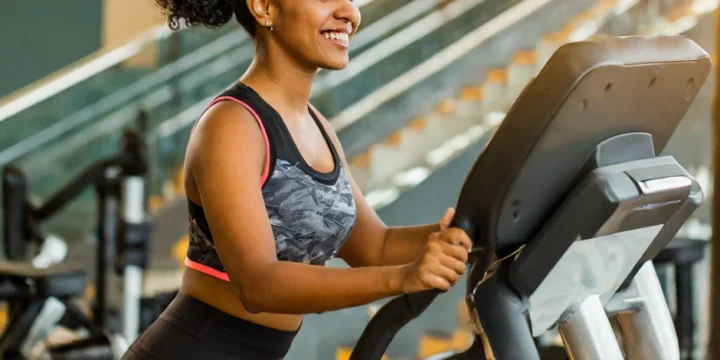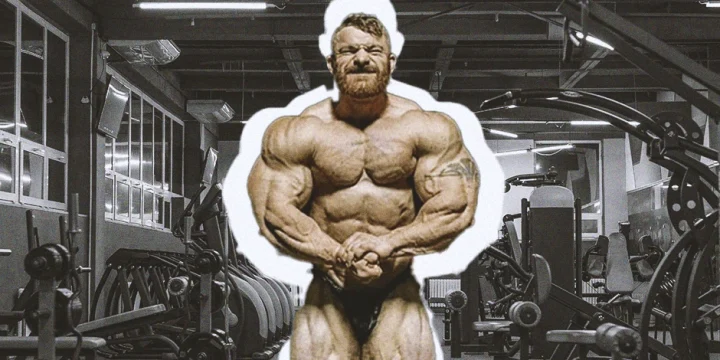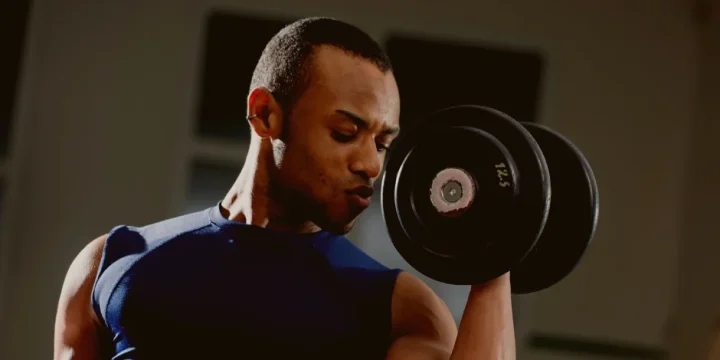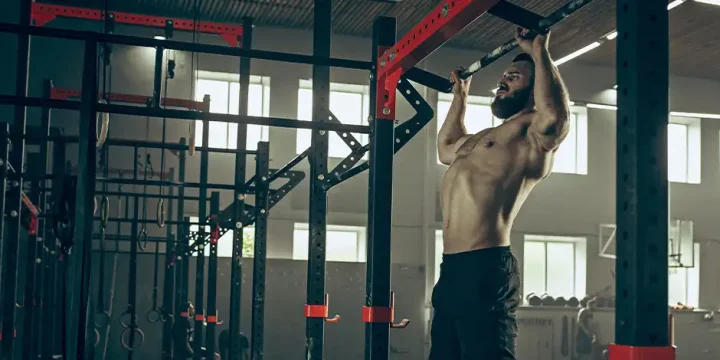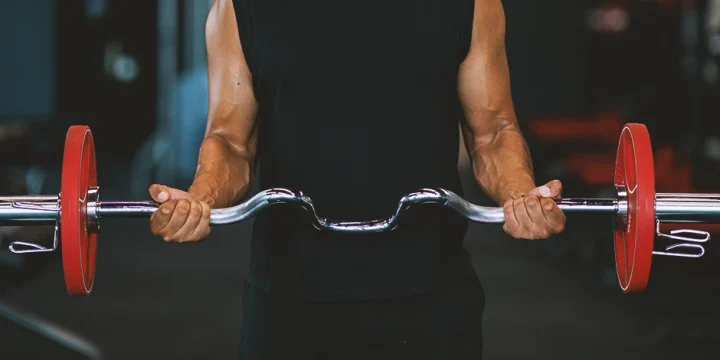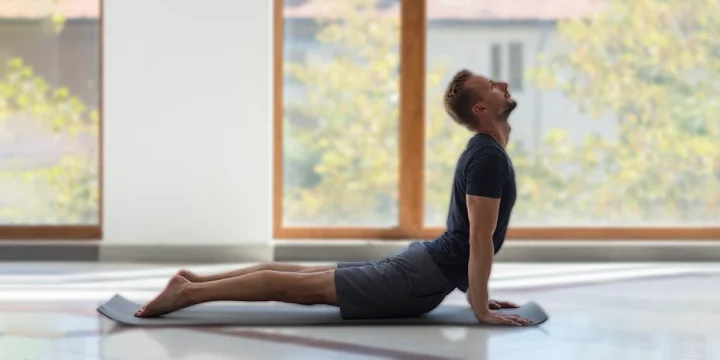As a personal fitness and strength coach, I’ve spent a lot of time with amateur and professional athletes.
When it comes to shaping your upper body, two of the glory muscle areas for most people are the upper arms and back.
And to help our readers do the same back and biceps workout that our clients go through, we decided to create this post and show you exactly how to approach it.
We spent a few weeks reaching out to colleagues in the fitness industry to come up with the ideal workout routines.
Quick Summary
- When it comes to planning your back and biceps workout, it’s all about striking a balance between compound and isolation exercises.
- Achieving even muscle growth in these areas should also be a major priority for all athletes.
- According to a study in Frontiers in Physiology, it's best to start with compound exercises, as they can boost overall muscle mass growth.
- When it comes to your back, you have to be especially careful about proper form to avoid some of the common injuries.
Panning The Best Back And Bicep Workout
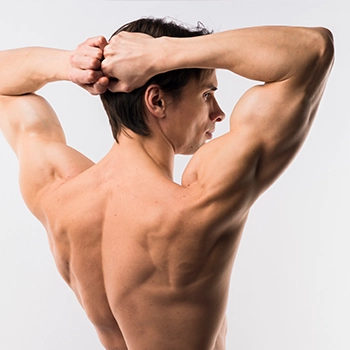
A common mistake I've observed is people starting their gym session by working on their arms.
While arm muscles are a popular showpiece for bodybuilders, this approach can actually diminish the effectiveness of your back workouts.
Here's the reason: many back exercises, such as cable rows and pull-ups, also engage your arm muscles, albeit to a lesser extent. If you begin your workout focusing on your biceps, they'll be fatigued by the time you get to your back exercises.
In an experiment with our preferred back and bicep workout routine, we made an interesting discovery.
We reversed the order of the exercises for five clients and monitored their performance. The results were consistent: their performance on back exercises was notably less effective when they started with biceps.
Effective training leads to more muscle growth.
This is why it's crucial to consider how your body recovers and builds new muscle tissue. Paying close attention to your post-workout protein intake is also essential for optimal muscle development [1].
Read More: Best Exercises for the Middle Back
The Best Back And Biceps Exercises
Now, I'd like to introduce the back and biceps workout we recommend to our clients. This routine has been thoroughly tested for its effectiveness on upper arm and back muscles.
1. Back Exercises

For your back muscles, we’ll focus on a mix of workouts that involve free weights and cable machines.
1. Seated Cable Rows
For the seated cable row, you want to get set up at a cable machine with a row seat and footplate attachment.
Here's how you do it:
- First of all, adjust the seat position with your knees bent slightly and where you have some tension on the cable while sitting up straight with your arms stretched out.
- Grab hold of a seated cable row handle.
- From this starting position, concentrate on not allowing your upper body to tilt forward or backward. You want your shoulder to do most of the work.
- Pull the handle to your chest while counting to two.
- Then, hold this position for a second and feel the pressure between your shoulder blades.
- Now, slowly release the tension for a count of three.
- Repeat for the desired number of reps.
2. Lat Pulldown
The next part of the workout routine will focus on the upper back muscles, and you’ll use the same cable pulley or lat pulldown machine for the lat pulldown.
Use a straight bar for a lat pulldown that you can grip wider than shoulder-width apart, and make sure that the thigh pads are comfortable and tight.
With the overhand grip, pull down the bar for a count of two, hold the tension for a second, and then slowly release the tension for a count of three.
This process will increase the time under tension. According to a study in the National Library of Medicine, this can significantly improve muscle growth [2].
“Time under tension (TUT) refers to the amount of time a muscle is held under tension or strain during an exercise set.”
- Gregory Minnis, DPT
Read More: Wide Grip Lat Pulldown 101 Guide
3. Reverse Cable Flyes
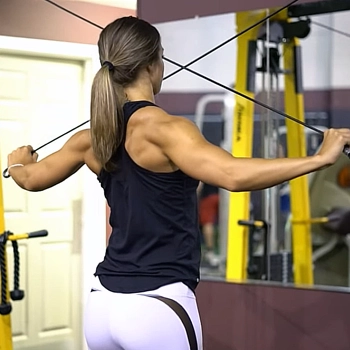
Here is a compound exercise that I personally love the most.
Here's how you do it:
- On a cable machine, set yourself up with a handle in each hand by your thighs so that the cables cross in front of you.
- With your feet shoulder-width apart, pull each handle up and perpendicular to your body with your arms straight.
- Slowly bring your arms back to the starting position.
- Repeat for the desired number of reps.
When done with good form, this exercise will trigger multiple muscle groups from your shoulder all the way to the middle of your back.
4. Dumbbell Rows
This is a great free-weight alternative to the cable row. You’ll want to set up with a pretty heavy dumbbell on the ground.
Since many people tend to do this exercise with bad form, here's a detailed step-by-step guide on how to execute it with perfection:
- Stand next to a flat bench. Place your right knee and right hand on the bench for support. Ensure your back is straight and parallel to the ground. Your left foot should be flat on the floor, and your left hand should be holding the dumbbell.
- Keep your neck in a neutral position, aligning it with your spine. Avoid looking up or down excessively. Your shoulders should be square and level, not hunched.
- With the dumbbell in your left hand, let it hang straight down from your shoulder. This is your starting position. Engage your core for stability.
- Exhale and lift the dumbbell towards your hip, keeping your elbow close to your body. Focus on pulling with your back muscles rather than just your arm. The motion should come from your shoulder blade moving towards your spine.
- As you lift, ensure your elbow doesn’t go higher than your torso and stays in line with your body, not flaring outwards.
- At the top of the movement, squeeze your back muscles, especially the lats and the muscles between your shoulder blades. Hold this contraction for a moment.
- Inhale and slowly lower the dumbbell back to the starting position. Control is key during the descent.
- Perform the desired number of reps, then switch to the other side, placing your left knee and hand on the bench and rowing with your right arm.
5. Straight Arm Pulldowns
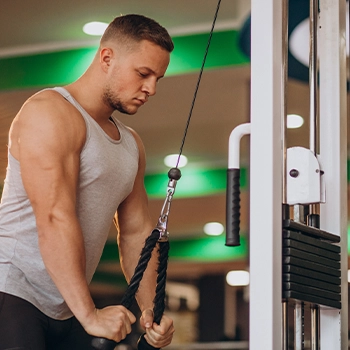
This is the last back exercise before we move on to our favorite bicep workout options.
Here's how you do it:
- Set up the cable machine as if you were going to do triceps pull-downs. But rather than standing close with your elbows bent, take a step away and keep your elbows straight.
- Slowly pull the handle down while keeping your arms perfectly straight until your hands reach your thighs.
- Then, slowly release the tension and feel the release in the muscle fibers of your upper back.
- Repeat for the desired number of reps.
2. Biceps Workouts

Your back should be tired at this stage, and those exercises will also have properly warmed up your arms for some biceps exercises.
1. Biceps Curls
I prefer doing a dumbbell curl standing up, but you can also do this as an incline dumbbell curl on a bench.
Here's how you do this exercise:
- Grab a reasonably heavy weight with palms facing away from you, and stand up with your knees slightly bent and feet hip-width apart.
- Then, slowly pull the dumbbell up to your chest, hold it for a second, and slowly lower it down again.
- Repeat for the desired number of reps.
This is one of those biceps workouts where going slowly with proper form will pay off a lot.
2. Dumbbell Hammer Curl
Hammer curls are a great variation for any biceps workout routine, and you could also just alternate this one with a regular dumbbell curl.
Here's how you do them:
- Hold two dumbbells with your palms facing each other and beside your thighs.
- Slowly pull one dumbbell up, holding it like a hammer.
- Then, lower the dumbbell down slowly and do the same with the other hand.
- You can do your reps alternatively or do a set with one arm before switching to the other.
3. Preacher Curls
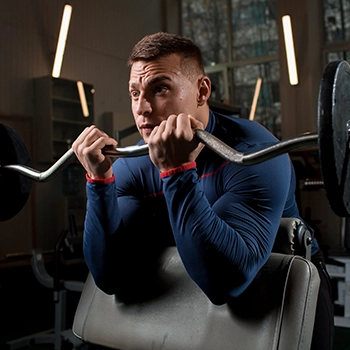
I generally recommend that bodybuilders do preacher curls using an EZ bar, but if you don’t have one available, then a dumbbell preacher curl can be just as effective.
To do preacher curls:
- Find a padded preacher curl station and adjust the height so that you can comfortably lean forward.
- Rest both elbows on the pad with a dumbbell in each hand.
- Then, slowly lower your arms till just before they're straight, and curl the weight back up.
- Repeat for reps.
Also Read: How to Do Preacher Curls?
4. Reverse-Grip Curls
This is a bicep workout that is underrated by many athletes.
The setup is very simple:
- Stand upright with your feet shoulder-width apart. Hold a dumbbell in each hand with your arms fully extended and palms facing down.
- Before you start the curl, tighten your core muscles. Exhale as you bend your elbows and curl the dumbbells towards your shoulders. Keep your elbows close to your sides and avoid any swinging or momentum. The movement should be controlled and originate from your forearm muscles.
- Inhale as you slowly lower the dumbbells back to the starting position.
- Repeat for reps.
Choosing Reps And Weights
When it comes to back and bicep exercises, my general advice is that you should aim for maximum strength gains by doing fewer reps and loading up the weight a bit.
For the above routine, I would suggest doing three sets of each exercise and doing six to eight reps in each.
You can push it up to about ten reps, but to take advantage of limited time, I’d keep the sets shorter and do more exercises.
Anatomy Of These Muscle Groups

To better understand why we structured the back and biceps workout like this, let me show you a bit of background to these two muscle groups.
1. Biceps Anatomy
There are two muscles to be aware of that make up the biceps [3].
These are:
- Biceps brachii: this is the large, thick muscle that has the primary role of flexing the elbow and does most of the work in the above exercises.
- Brachialis: This is a smaller muscle and lies between your brachii and the triceps on the outer side of your arm.
These two muscles work very much in unison, and you’ll target both with all the above workouts.
The different hand grips will add or reduce the strain on the brachialis, which is why we have added a mix.
2. Back Anatomy
There are several major muscles in the back that you need to keep in mind [4].
These are:
- Latissimus dorsi: These are the lats that you’ll find at the top of your back, and they help to pull your arms downward and backward.
- Teres major: This small muscle below your shoulders is responsible for pulling your arms backward.
- Rhomboids: These upper back muscles help to control and move the shoulder blades.
- Trapezius: This is another large muscle group that is involved in moving the shoulder blades.
Note: The erector spinae muscles which run along your spine in your lower back are generally part of your core, and you won’t directly target them with the above back and bicep workout.
Is It Good To Work Out Back And Biceps Together?
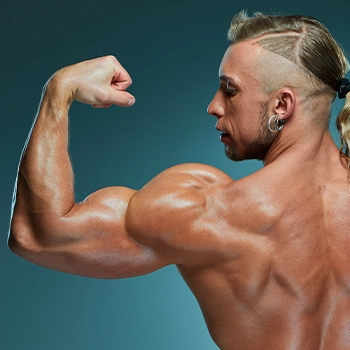
Yes, it is good to work out your back and biceps together in the same training session.
You can work on each muscle group with separate compound and isolation exercises without causing too much strain fatigue in one area.
You’ll also find that these are two areas where you want to achieve consistent and parallel growth in muscle mass.
I’ve seen it too many times that amateurs spend too much time on their upper arms.
They have massive biceps, and then their shoulders and back look completely out of proportion.
The great thing about a back and biceps workout is that you can adjust what kind of sets you do.
According to a study in Frontiers in Physiology, it's best to start with compound exercises, as they can boost overall muscle mass growth [5].
And then, when you want to shape certain muscles, you can switch to doing more target isolation exercises.
“While there’s no way to speed results at the gym—nothing will replace consistently working hard—there are ways to make sure you’re training smarter, and doing compound exercises is one of them.”
- Alexa Tucker, Editor at self.com
Related Article: Best Chest and Shoulder Workout
FAQs
Should You Train Biceps Or Back First?
You should ideally train your back first and then your biceps. The reason is that many back exercises will also require your arm muscles as support. And if you exhaust your arms, then you won’t be able to do as much lifting for your back.
Is Back And Biceps A Good Split?
Yes, a back and biceps workout is a good split. These muscle groups can be separately targeted, meaning that you have a better chance to reduce your rest time between different sets.
References:
- https://www.ncbi.nlm.nih.gov/pmc/articles/PMC6566799/
- https://www.ncbi.nlm.nih.gov/pmc/articles/PMC3285070/
- https://www.physio-pedia.com/Biceps_Brachii
- https://teachmeanatomy.info/back/muscles/
- https://www.frontiersin.org/journals/physiology/articles/10.3389/fphys.2017.01105/full
About The Author
You May Also Like
